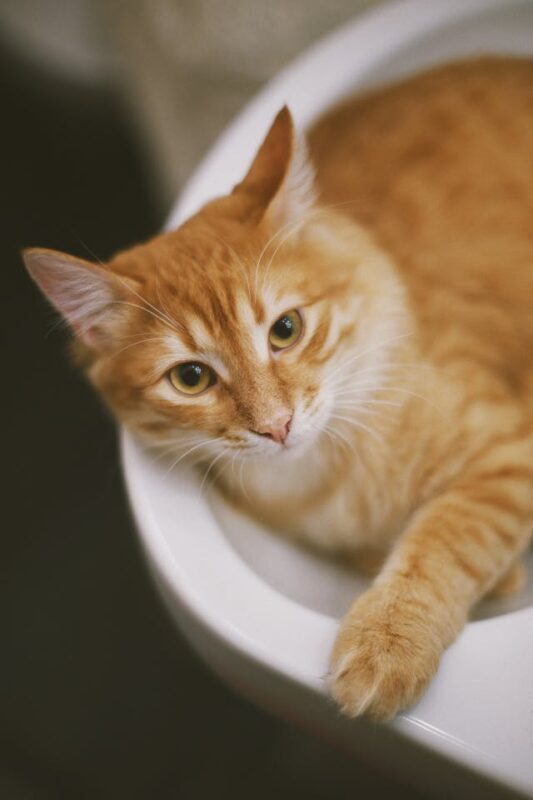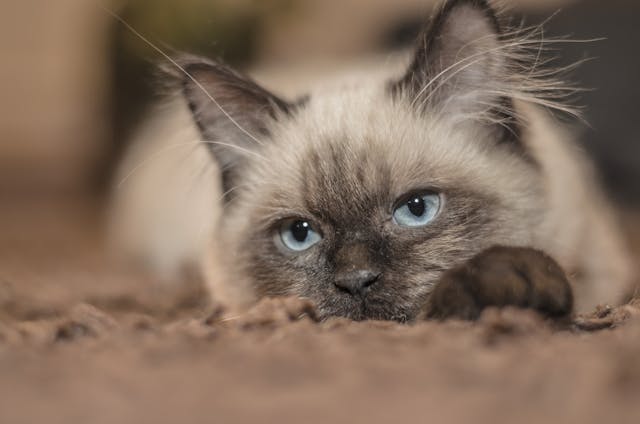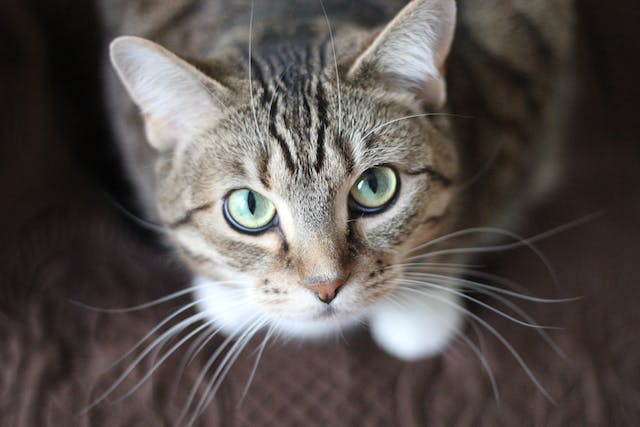Nasal Lymphoma in Cats: Signs, Causes and Treatments
Posted: 03/24/2025 | BY: Jenna Bruce | Categories: Cat , Health problems , Pet care
As pet parents, we always want the best for our furry companions. We do everything we can to keep them happy and healthy, from regular vet visits to providing them with nutritious meals and plenty of love. But sometimes, our cats can develop conditions that are harder to detect and more challenging to treat. One such condition is nasal lymphoma in cats – a type of cancer that affects the nasal passages and sinuses.
If your cat has recently been diagnosed with nasal lymphoma, you may have a lot of questions. What is it? What causes it? And most importantly, how can you help your cat through this tough time? In this article, we’ll break down what nasal lymphoma is, how it affects cats, the signs to watch for, and the treatment options available. Plus, we’ll explain why pet insurance is a valuable investment when it comes to your cat’s health.

What Is Nasal Lymphoma in Cats?
Nasal lymphoma is a type of cancer that originates in the lymphatic system, which is part of the body’s immune system. Lymphoma is a cancer that affects lymphocytes, the white blood cells that help fight infections. In the case of nasal lymphoma, the cancerous cells affect the lymphoid tissues within the nasal cavity and sinuses.
Lymphoma is one of the most common cancers in cats, and it can manifest in different parts of the body, including the gastrointestinal tract, lymph nodes, and, in this case, the nasal area. Nasal lymphoma typically occurs in older cats, though it can affect cats of any age.
What Causes Nasal Lymphoma in Cats?
Like many types of cancer, the exact cause of nasal lymphoma in cats is not fully understood. However, there are a few factors that may contribute to its development:
- Feline Leukemia Virus (FeLV): Cats infected with FeLV are at a higher risk of developing various types of cancer, including nasal lymphoma. FeLV weakens the immune system, making it more susceptible to cancers like lymphoma.
- Feline Immunodeficiency Virus (FIV): Like FeLV, FIV weakens the immune system, increasing the likelihood of cancerous cell development.
- Chronic Inflammation: Chronic inflammation in the nasal passages, often caused by long-term infections or irritants, can sometimes increase the risk of developing lymphoma.
- Genetic Factors: While not as widely researched, there may be some genetic predisposition in certain breeds of cats, which could make them more susceptible to nasal lymphoma.
Though the cause of nasal lymphoma remains largely unclear, it’s important to understand that it is not contagious. If your cat has nasal lymphoma, it did not catch it from another animal.
Signs and Symptoms of Nasal Lymphoma in Cats
Detecting nasal lymphoma early can be tricky, as many of the signs mimic those of less serious conditions, such as sinus infections or allergies. However, if your cat displays any of the following symptoms, it’s important to consult with your vet right away for a proper diagnosis:
1. Nasal Discharge
One of the most common signs of nasal lymphoma is a persistent nasal discharge, which can be either clear, mucous-like, or bloody. The discharge may be one-sided, which can sometimes help distinguish it from other nasal conditions.
2. Sneezing and Nasal Congestion
Cats with nasal lymphoma often sneeze frequently and may have difficulty breathing through their nose due to blockage or swelling. If you notice your cat breathing with their mouth open or having trouble breathing normally, this could be a sign of nasal lymphoma.
3. Facial Swelling
Because the tumor can cause inflammation and swelling within the nasal passages and surrounding tissues, you may notice swelling around your cat’s face, particularly near the eyes or the bridge of the nose. This can lead to noticeable changes in their appearance.
4. Loss of Appetite and Weight Loss
As with many cancers, a decreased appetite is a common symptom of nasal lymphoma. Your cat may also lose weight, which could be due to a combination of reduced food intake and the cancer affecting their overall health.
5. Lethargy
Cats with nasal lymphoma often become more lethargic than usual. They may sleep more than normal and seem less interested in their favorite activities, like playing or exploring. This is a sign that the cancer is impacting their energy levels.
6. Behavioral Changes
As with many health conditions, cancer can also affect your cat’s behavior. If you notice your cat becoming more irritable, withdrawn, or not acting like themselves, it could be due to discomfort or pain from the tumor.
If you observe any of these symptoms in your cat, it’s crucial to schedule a vet appointment as soon as possible. A timely diagnosis can lead to better treatment outcomes.
Diagnosing Nasal Lymphoma
If your vet suspects that your cat has nasal lymphoma, they will likely perform a variety of diagnostic tests, which may include:
- Physical Exam: The vet will examine your cat’s nose, face, and overall health. They may also palpate the lymph nodes to check for signs of swelling.
- X-rays: X-rays of the chest and nose can help identify tumors or abnormal tissue in the nasal passages or sinuses.
- Rhinoscopy: A procedure where a camera is inserted into the nasal passages to directly view the tumor and obtain tissue samples.
- Biopsy: The vet may take a small tissue sample from the tumor to determine if it is cancerous and confirm the diagnosis.
Treatment Options for Nasal Lymphoma in Cats
Once a diagnosis of nasal lymphoma is confirmed, your vet will discuss treatment options. While nasal lymphoma is a serious condition, it is treatable, and many cats experience significant improvements with the right care.
1. Chemotherapy
Chemotherapy is one of the most common treatments for lymphoma in cats. While it’s often associated with side effects in humans, cats tend to tolerate chemotherapy better. Chemotherapy drugs can help shrink the tumor and slow the progression of the disease.
2. Steroid Treatment
Steroids like prednisone can help reduce inflammation and shrink tumors. While steroids are not a cure for lymphoma, they can significantly improve your cat’s quality of life and reduce symptoms like nasal discharge and congestion.
3. Radiation Therapy
In some cases, radiation therapy may be recommended, particularly if the tumor is localized and accessible. Radiation can be effective at shrinking tumors and alleviating symptoms.
4. Surgical Removal
If the tumor is localized and accessible, surgery may be an option to remove the tumor. However, this is not always feasible, especially if the tumor has spread to other areas.
Your vet will work with you to determine the best course of treatment for your cat based on their overall health, the size and location of the tumor, and the stage of the lymphoma.
The Importance of Pet Insurance
Treating nasal lymphoma in cats can be costly, particularly when multiple therapies like chemotherapy, radiation, or surgery are involved. That’s where pet insurance can make a significant difference. Pet insurance can help cover a large portion of the cost of treatments, giving you peace of mind knowing that you can focus on your cat’s recovery without worrying about the financial burden.
If you don’t have pet insurance yet, consider enrolling today. It’s an investment in your cat’s health and your ability to provide them with the best care possible, especially if they are facing serious conditions like nasal lymphoma.
Find & Compare the Top Pet Insurance Companies
Get Quotes for Your CatFinal Thoughts
Nasal lymphoma in cats is a serious condition, but with the right care and treatment, many cats can live longer, healthier lives. If your cat shows any signs of nasal lymphoma, don’t hesitate to get them checked by a vet. Early detection and intervention are key to managing the disease and providing your cat with the best possible quality of life.
And remember, with pet insurance, you’ll be better equipped to handle the costs of treatment, so you can focus on what really matters: giving your cat the love and care they deserve.
References:
- https://vetmed.iastate.edu/sites/default/files/LVMC/SmallAnimal/Specialties/Oncology/ClientResources/ISU%20LVMC%20Oncology%20Feline%20Nasal%20Lymphoma%20Flyer.pdf
- Ng KWL, Beatty JA, Tse MPY, Giuliano A. Nasal Lymphoma with Low Mitotic Index in Three Cats Treated with Chlorambucil and Prednisolone. Vet Sci. 2022 Sep 1;9(9):472. doi: 10.3390/vetsci9090472. PMID: 36136688; PMCID: PMC9503513.
- https://onlinelibrary.wiley.com/doi/10.1111/j.1939-1676.2008.0243.x
Disclaimer
The information contained on this blog is intended for informational and educational purposes only and should not be construed as medical advice. It is not a substitute for professional veterinary care. Always consult with your veterinarian before making any changes to your pet's health care or treatment plan.
The authors of this blog are not veterinarians and do not claim to be experts in pet health. The information provided here is based on our own experiences and research, as well as information from reputable sources. However, we cannot guarantee the accuracy or completeness of this information.
We encourage you to do your own research and consult with your veterinarian before making any decisions about your pet's health.
Previous post
Asthma in Dogs: Signs and TreatmentsNext post
Side Effects of Prednisone for DogsCompare top pet insurance providers & plans.
Enter your dog’s age in years and months to calculate their age equivalent to human years.
Calculate your dog’s ageEnter your cat’s age in years and months to calculate their age equivalent to human years.
Calculate your cat’s age


